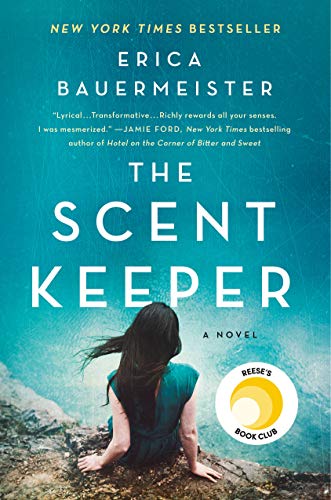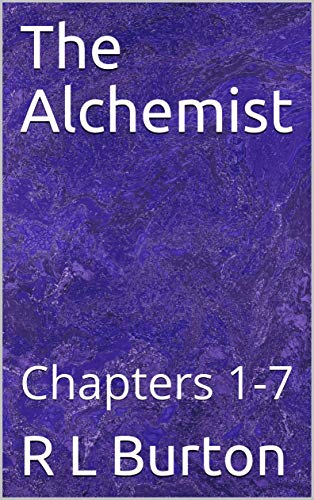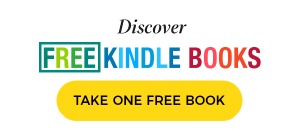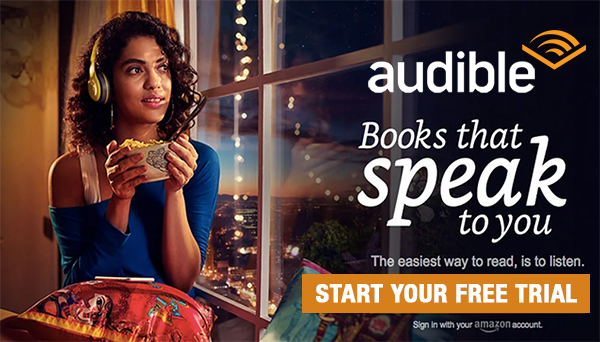So You Want To Make Money With Your Self-Published Book? Avoid These 7 Mistakes!
Book publishing could be only profitable if you play the long game!
You published your first novel on Amazon and you have no sales?
You started an Amazon Ads campaign, but the ROI of the campaign is very low?
Maybe it's time to understand some facts in the world of book publishing!
In this article we want to answer the question “why are my books not selling on Amazon“. There could be many reasons of this, several of them are very clear for a marketing guy like me, but there could be some hidden reasons. I would like to show you the most important “sales-killing” points to avoid them as first time publisher in the future or if you have been already published your book consider improve these parts.
Publishing Your Story Won't Guarantee any Income In 2022
If you've written a book and are hoping to make some money off of it, you may be wondering how to go about publishing your work. While there are many different ways to publish a book, not all of them will earn you money. Just to give an example if you publish your book dedicated on Apple Books Store, it will be a fail. Why? Because the majority of US book readers (67% in case of e-books) are using Amazon, and you will be present only a tiny fraction of the market.
There is no guarantee you will make any money from publishing your book. Even if your book is well-written and receives good reviews, it may not sell enough copies to earn you a profit. There are a number of factors that contribute to whether or not a book is successful, so don't get too discouraged if your first attempt doesn't bring in the bucks.
Avoid These 7 Mistakes When Publishing Your Book!
Book Publishing Mistake 01: Low Quality Book Cover
Pick one book from the following two options!
Both books are in categories “magical realism” and “coming of age”


If you would pick one, which one would you? Left or right?
Well, maybe you preferred the right one, but you would be the minority, since 95% of people would choose the left one over the right, hence the right cover isn't bad! Not at all! But the left one's quality is higher, and this is something only our brain really understands. We couldn't clearly express our arguments besides the left one, maybe the font face, maybe the colors, but most importantly it's simply “better”.
Ok. Now let me show you another cover. No, this isn't the same Alchemist.

Well, as a marketeer I meet with lot of similar low quality covers, and trust me, nobody maybe not even friends would buy this book.
What I can suggest? Hire a professional cover designer! You don't want to save money on cover design, you just want the best cover that holds readers attention!
Book Publishing Mistake 02: Hefty Price Tag
You are a fresh new author and your Kindle book priced at $11.99 on Amazon? Well, most likely your book is overpriced.
The high price in case of new books is often seen as a barrier to entry for many would-be readers. It's a bigger issue in case of debut authors, who have literally zero readers and fans.
Typical fiction book prices for Kindle:
- $1.99
- $2.99
- $4.99
Of course pricing strategy depends on many factors like,
- book niche (business or fiction),
- length of the book,
- is it a fresh new book,
- author's marketing value (how many previous books he or she sold, social media presence etc.),
- global presence of the book (previous sales, articles),
- marketing dollars spent.
The most important factor is the book's niche. If the book is about a popular topic, like YA fantasy, then it will be more expensive. The average price is also higher in case of scientific or business books.
The length of the book also plays a role in its price. A longer book will generally be more expensive than a shorter one, and these are not just about the printing cost, but also the story value.
The author's marketing value also highly affects the price of a book. An author with a lot of fans on Tiktok could be able to charge more for their book than one who is not as well-known.
You would like to find the ideal book price, best fitting price for readers, which is low enough for readers to afford to your book, and has it's royalty potential for you.
Check also our pricing guide for Kindle, paperback and hardcover books.
Book Publishing Mistake 03: Low review count, no editorial reviews
This is a typical “sales-killing” factor. A book with zero reviews on Amazon (even under 10 for many people) may result instantly closing the book's tab.
This is because potential buyers will see that there are no reviews and assume that the book is not good. There are millions of books sitting on Amazon with zero reviews.
Having more reviews will give potential buyers more confidence in the book and encourage them to buy it. Therefore, if you want your book to sell well on Amazon, you need to get more reviews.
The truth is getting reviews is extremely hard job. Even if somebody buys and reads your book most likely he or she won't leave a review. It's an extra effort what people want to avoid.
There are some good solutions like Netgalley, or techniques like “requesting a review” at the end of your book with direct QR code link to your book's Amazon page, but creativity plays an important role here.
An editorial review is a professional assessment of a book by someone who has read and evaluated it. These reviews can be found in magazines, newspapers, online, and even in bookstores. While many people view these reviews as necessary for marketing purposes, there are some clear benefits to having your book reviewed by professional reviewer like Kirkus.
An editorial review can give your book credibility and help it to stand out from the competition. A positive review can show potential readers that your book is worth their time and money. In addition, a good review can help attract the attention of literary agents and publishers. If you are self-publishing your book, an editorial review can also be helpful in boosting sales.
Overall, an editorial review can be a valuable tool in marketing your book. You can use these for promotional purposes, like on your Amazon's book page (you can enter these in Amazon Author Central). These are very similar to normal reviews, but you can pick them by your hand. In Amazon Author Central there is a section where you can simply copy-paste them and they will appear in a dedicated section on your book's Amazon page.
Book Publishing Mistake 04: Amazon description or Ad-copy problems
Give something away from the book!
A typical problem, when a reader don't understand or don't care about story. The description should be engaging and give away relevant information from the book if we are speaking about fiction:
- character names
- dates, places
- starting set
- mission
- opposites
or general background and whys in case of the non-fiction books:
- Why the author wrote the book (motivation)
- What I will learn in the book?
- What problem the book might solve?
- Important arguments
Using AIDA formula for Amazon description?
When it comes to Amazon descriptions, many authors and publishers use the AIDA formula. This stands for Attention, Interest, Desire, and Action. The goal is to get the reader's attention, interest them in the product, make them desire it, and then take action by purchasing it. However, this formula can often lead to ad-copy problems.
One issue is that the AIDA formula often leads to descriptions that are too long. Because the goal is to include all four elements, the result is a description that is several paragraphs long. This can be off-putting for potential customers who just want a quick overview of the product.
Another problem with using the AIDA formula is that it can make the description seem sales-y or pushy. Because the ultimate goal is to get people to purchase the product, descriptions can often come across as too promotional.
I personally don't prefer AIDA in case of fiction books, a quick insight into the story, theme and characters could give more for an experienced reader. I personally recommend AIDA only for non-fiction books.
Formatting mistakes
Beside information, the description should be simple, no fancy formatting required. But use spacing, paragraphs, bullet points, and the necessary formatting tools (bold text).
Try to avoid CAPITALIZED LETTERS, which has no marketing value, just harms your book. It can come across as being too aggressive. Instead, use more paragraphs or single lines to make your description more friendly and inviting. Not only will this help you connect with potential customers, but it could also lead to more sales.
Book Publishing Mistake 05: No past marketing activity
A book without marketing activity is a problem in terms of book sales. If you did only one campaign or promotion it will most likely won't have any big effect on your sales.
I don't know any marketing activity or $100 marketing package service which will “boost” your sales.
In the real world with marketing, we are always doing the long game. We called this phenomenon “inertia“. People are looking for brands even in case of books. Author names, publishers, series they are all kind of brand names. And like any other kind of brand, they need to be marketed.
Authors need to be marketed so that readers will know who they are and what they write. Publishers need to be marketed so that readers will know what kinds of books they publish. And series and sinlge book titles need to be marketed so that readers will know what shall they search for in book stores.
All of these brands should be unique and known. If a visitor recognizes any of these brands:
- author name,
- publisher,
- book title or series name
it is half success!
With marketing we could do only two things:
- Boosting impressions and getting visitors
- Improving your brand name and identity
Without visitors, you will never be able to improve your sales numbers. The best way to get visitors is to create compelling content (next to your book) that will attract attention and drive traffic to your social media or website. Ultimately they will find your book's link and go to Amazon.
The best way to improve your brand name is to create a consistent branding strategy that includes a clear message and a recognizable logo.
Both are important, but in order to get the snowball effect, your brand name should achieve a certain level of history. I call it history because it takes time. Most likely years. This is a bad thing for first time authors, but we are people and we learn new things slowly.
There are many marketing activities:
- Social media posts about the book and in your topic (top platforms: Tiktok, Instagram)
- “Top book” articles (guest posts)
- Listing your book on many websites
- Kindle countdown deals, or free promotions
- Mentioning the book on social sites like Reddit, Quora
- Paid promotion on Amazon Ads, Facebook, Instagram
Start somewhere! You can't make big mistakes in the world of marketing, the worst thing you can do is to do nothing.
If you are looking for more marketing ideas check out our book “The First 100 Days of Your Book” or our dedicated section for authors.
Book Publishing Mistake 06: Lack of utilizing further visual components on Amazon
Did you hear about Amazon A+ content? Those visual boxes in case of famous books?
Did you know that since 2021 it is available also for self-published authors in KDP?

Amazon A+ content is a new type of visual tool that's designed to help sellers improve their product listings. It's basically a mix of text and images that helps shoppers understand what a product is and why they should buy it.
So far, Amazon A+ content has been well-received by sellers and shoppers alike. Sellers who have used it say that it's helped them boost their sales, while shoppers say that it's made finding products on Amazon easier and more fun.
If you're looking to improve your book's Amazon listings, then Amazon A+ content is definitely worth checking out.
Book Publishing Mistake 07: Your book is in a crowded niche
There are already too many books out there on the same topic, and yours is getting lost in the shuffle. You need to find a way to make your book stand out from the rest.
Let me give you an example: You wrote a book in the poetry genre. From marketing point of view it is a nightmare to promote poetry books. Mainly, because its a crowded and non-segmented niche.
So what is a good niche? Time-travel science fiction or techno-thrillers are also popular genres, but they are great sub categories for a book. Readers know what they will get for their money, which isn't the case in poetry niche.
If there is a huge competition within a niche, your book could be easily missed because of the noise. What are the crowded or oversaturated niches?
- Poetry
- Self-help
- Children's books
- YA Fantasy
- Memoirs
- Success books
- Romance (generic)
- Christian books
There are many book niches that have become crowded or oversaturated in recent years. This is especially true for genres like poetry, self-help books, and success books. Romance and young adult (YA) fantasy are two other genres that have seen an influx of new titles in recent years.
With so many options available, it can be difficult for authors to stand out in these crowded markets. And, with publishers being more risk-averse than ever, it’s becoming increasingly difficult for new authors to break into these genres.
So, what does this mean for readers? Well, it means that there are more choices than ever before. But it also means that the quality of books in these genres can vary widely.
If your book falls in one of the above category, be sure to have a well-defined sub-category for your book! The better sub-category you find to your book the easier the marketing would be.
Final Thoughts on How To Increase Your Book Sales?
When it comes to increasing book sales, avoid making these above common mistakes. You need those tiny nuances that makes the difference but not necessary the hard way!
In conclusion, not knowing your target audience: It’s important to know who your target reader is and what they’re looking for in a book. This will help you determine the right marketing strategies to reach them.
Relying on social media alone: While social media can be a great platform for promoting your book, it shouldn’t be your only marketing strategy. Make sure you’re also using other channels such as email marketing, paid ads, and PR to reach more potential readers.
Not having a professional cover: First impressions matter, so make sure your book cover looks professional and is attractive to your target audience. Hire a designer if necessary to create a high-quality cover that will help you sell more books.
Would you like to market your book or get further ideas?
Go to Author's Section!My profession is online marketing and development (10+ years experience), check my latest mobile app called Upcoming or my Chrome extensions for ChatGPT. But my real passion is reading books both fiction and non-fiction. I have several favorite authors like James Redfield or Daniel Keyes. If I read a book I always want to find the best part of it, every book has its unique value.






